The dilemma is over; we have found the most delightful cup of pleasure – it’s white tea. Caffeinated and hot beverage lovers around the world unite over this one!
A tea variety of this kind is very delicately and minimally processed, even before the tea plant’s leaves fully open. This is where the name “white” comes from – because the buds are still covered with white hairs.
Imagine drinking a beverage from a handpicked plant and then meticulously dried; no better way to feel special.
Contents
How is White Tea Made
The Camellia Sinensis plant traditionally grows in the Fujian province of China. It’s the plant from which white, green and black teas are made.
The white color comes from the silver hairs of the Camellia Sinensis Baihao variety plant’s unopened buds.
Even though many consider it a variety of green teas, white tea differs from all other tea types. The minimal processing and low oxidation results make it completely unique and the freshest tea ever.
Nowadays, India and Vietnam also produce white teas, which greatly differ from China’s. When compared, the teas also have a different taste and vary in the caffeine amount.
White Tea Oxidation Process
White tea refers to various tea types that originate from young and minimally processed leaves of the Camellia sinensis plant.
Leaves are left to be exposed to oxygen after they have been harvested and this is how the oxidation process occurs. Using different methods to stop or speed oxidation up helps tea masters in the processes.
When it comes to this tea type, none of these processes are used. It’s left to wither and dry in a controlled environment, which later gives us the best-tasting tea.
White Tea vs. Green Tea vs. Black Tea
When talking about oxidation, it comes naturally for us to compare black and green tea with white. You could ask yourself where the difference lies. Well, the process of oxidation plays a major role in it.
Black tea leaves are allowed to oxidize fully, and after that, they are heat-processed and dried, which leads to that deep brown color and mixed combination of flavors.
However, compared to black, green tea leaves are quickly heated and dried. It helps prevent oxidation because it can accelerate color change and change the flavor.
For white tea, oxidation is never encouraged manually, and it only happens naturally while buds are air-drying in the sun. If you have ever wondered where the softer note of flavor came, now you know.
Different Types of White Tea
Silver Needle (Baihao Yinzhen)
Even though traditionally silver needles were a product of Da Bai cultivated varieties, this is no longer the case.
This type comes from high-elevation tea growing regions such as Darjeeling and the Nilgiris combined with local tea cultivars.
Silver Needle is exquisite in flavor, aroma, and color, which gives him the supreme power but makes it pricey.
White Peony (Bai Mudan)
This type differs from Silver Needle in color and flavor. As we know from before, white tea’s oxidation process is what makes it stand out from the other ones.
White peony has a stronger taste and a bit darker color due to the leaves being partially oxidized.
Long Life Eyebrow (Shou Mei)
Shou mei is produced by using the buds and the first few leaves of the tea plant. China is the main source for this tea type.
This type’s leaves are plucked late in the harvest season. It leads to the strong and fruity flavor and aroma, one which would highly remind you of the oolong tea.
Tribute Eyebrow (Gong Mei)
Made from seeds of a tea varietal ‘Small White,’ Gong Mei has a bit more complex flavor and thicker texture. Its main characteristic is a sweet flowery aroma, which is savory and very soothing.
Ceylon White Tea
Coming directly to us from Sri Lanka’s regions, Ceylon White Tea is a very rare type. Its rarity is owed to the long curved silver tea buds covered with downy hairs.
A unique and fruity aroma just for your taste, waiting for you in a teacup.
Darjeeling White Tea
Steamed and dried leaves and buds only – this is the specific form of white tea, Darjeeling. Being the least processed type, it has many healing properties.
The brews of this variety have a pale yellow color and sweet flavor without the green tea associated undertones.
Best White Tea Brands
The best white tea brands contain a high level of antioxidants produced by organic leaves and have positive ratings among tea drinkers.
Here are some of the best brands I’d like you to consider:
Lipton White Tea
In the midst of the sea of tea brands, there has to be a leading one. Lipton seems to have incorporated that role for itself. Lipton offers a whole universe of white teas to choose from with a wide range of different varieties and flavors.
Whether you prefer it with the mango, raspberry, or peach aroma, Lipton has something for everyone’s taste. It also displays an opportunity to try the White Iced Tea Raspberry, which is the perfect fit for leading an active and healthy lifestyle.
Twinings White Tea
Twinings also offers many different varieties of this specific type. The most famous ones here are Rosy Fig Flavour White Loose Tea. This one steals your heart away with the amazing and mellow aroma mixed with a hint of rose, almond, and fig.
Another similar one is China White, which also belongs to this series called White Loose Tea. Its country of origin is (non-surprisingly) China, specifically coming from the Yunnan Province.
Prince of Peace
Seen as a very reliable and trustworthy brand, Prince of Peace has been offering its delightful tea products on the market over the years.
Their Organic White Tea series allows us to try tea with a richer aroma and fuller body. The leaves and buds are handpicked at a young age, and they go through the Zhenghe-style of processing, which is responsible for the flavor.
White Tea Preparation
Now that you know something about the history of white tea, the different types, you have chosen the brand, preparation is what comes next.
The process of preparing the tea is the most rewarding one for tea lovers. The best way is to ask your tea vendor for brewing instructions specific to the variety you have purchased.
Generally, bear in mind the temperature, which needs to be around 175-190F, and steep the tea for 1 to 5 minutes. You don’t want to oversteep your tea because it can become bitter and release astringency.
Usually, you need to use around 2 grams of loose leaf tea per 8 oz. cup of water. Use pure, cold filtered water, and always cover it while it steeps.
No need for any additives such as sugar or milk if you want to appreciate the authentic flavor and aroma.
How to Consume White Tea
There was no better way to pay homage to the Emperors of the early Chinese Imperial Dynasties than offering their delicate palates to try the finest forms of teas.
Well, you can be an Emperor and enjoy the exquisite aroma and taste of the white tea, one of the first tea types offered to the Emperors.
It’s better to consume it without any sugar, milk, or adding lemon because those can only intervene with the texture and flavor.
To enjoy and experience the raw flavor, all you need is to brew it, wait for the steeping period of 3-5 minutes, and then drink it.
Does White Tea Have Caffeine?
The amount of caffeine in the contents of white tea can vary depending on the origin. The traditional types are low in caffeine.
For instance, a cup of tea can contain approximately six milligrams of caffeine. Compared to a cup of coffee, which consists of 80 – 200 milligrams, it shows there is a discrepancy in amounts.
Consequently, it’s the best choice for people who don’t like coffee or control their caffeine intake in the morning.
Some types of this variety on the market have the same amount of caffeine as green or black tea. That’s, however, due to the country of origin.
Top 5 White Tea Health Benefits
The white tea has a long list of health benefits that improve the performance of organs in the body. It good for the kidneys and the liver because it’s a great source of antioxidants and catechins.
If consumed regularly, white tea can help you with:
Weight Loss
In these fast-changing and demanding times, it seems impossible to control our body weights and keep ourselves healthy. White tea can come to the rescue. It contains low contents of caffeine, and it is less processed than other teas.
This makes it retain more antioxidants than even green tea, and it can help us in the process of weight loss. It is a low-calorie beverage.
Although it does help our bodies detox, we need to lead an active and healthy lifestyle. It is highly recommended to combine drinking it and doing regular exercise in order to see the results wanted to be achieved.
Skin Care
As we have stated before, white tea is a source of antioxidants, and it helps in the fight against acne. Consuming it makes the skin look fresh because it liberates us from stress and rejuvenates it.
It also aids in clearing already existing acne, which is helped by extracting toxins from the body.
Prevents Cancer
In some studies conducted to show the healing properties of white tea, researchers concluded that apart from antioxidants, it has an anti-proliferative effect against cancer cells as well.
Regular consumption helps in protecting the normal cells against any DNA connected damage. This drink can also be crucial in maintaining good health and protecting the body from diseases.
Reduces Risk of Heart Disease
Due to it being the least-processed type of tea, it preserves many of the natural health benefits.
The richness in polyphenols is a major aid tool in lowering high blood pressure and cholesterol. This altogether reduces the risk of heart disease.
Improves Oral Health
Fresh breath and great-looking teeth are the goals every single person wants to achieve. As a source of fluoride, catechins, and tannins, white tea helps strengthen the teeth and fight bacteria and sugar.
The presence of fluoride prevents dental cavities and makes the surface of teeth resistant to acid attacks.
White Tea Side Effects
Side effects from white tea generally stem from the caffeine contents. Even though it is low in caffeine, it does contain a certain amount, which may cause problems.
Some of the most common side effects of white tea consumption are insomnia, dizziness, and nausea. It does not exclude having allergic reactions and the cause of skin irritation.
This type of tea can also cause some harmful effects for pregnant women. They need to consume below 200 mg of caffeine per day so that there won’t be any further complications in the pregnancy.
People who suffer from liver diseases, sleeping problems, anxiety, pregnant women, and breastfeeding moms need to be extremely careful of how much white tea per day they consume. It may have serious health consequences if not controlled.
Where to Buy White Tea
Considering your buying habits, we can give a few ideas on where you can purchase white tea.
Like any other tea type, you could find it in the nearest store, order it online, or even possibly buy it from an open fresh market. It depends on where you live, how much white tea is consumed and whether it is of good quality or not.
Nowadays, it became viral for people to place an order online, even for the most basic things. So, maybe it would be more convenient for you to buy the white tea you need online.
You can choose amongst the many websites, such as Amazon, eBay, and so on. Reviews are available as well, so you will get the opportunity to read about other people’s experiences with the tea.
This helps make a better decision of which brand to choose. Just open your browser and search for the type you want to try. Or maybe, visit the nearest store and see what they have to offer you.
Good luck, and enjoy your cup of tea!

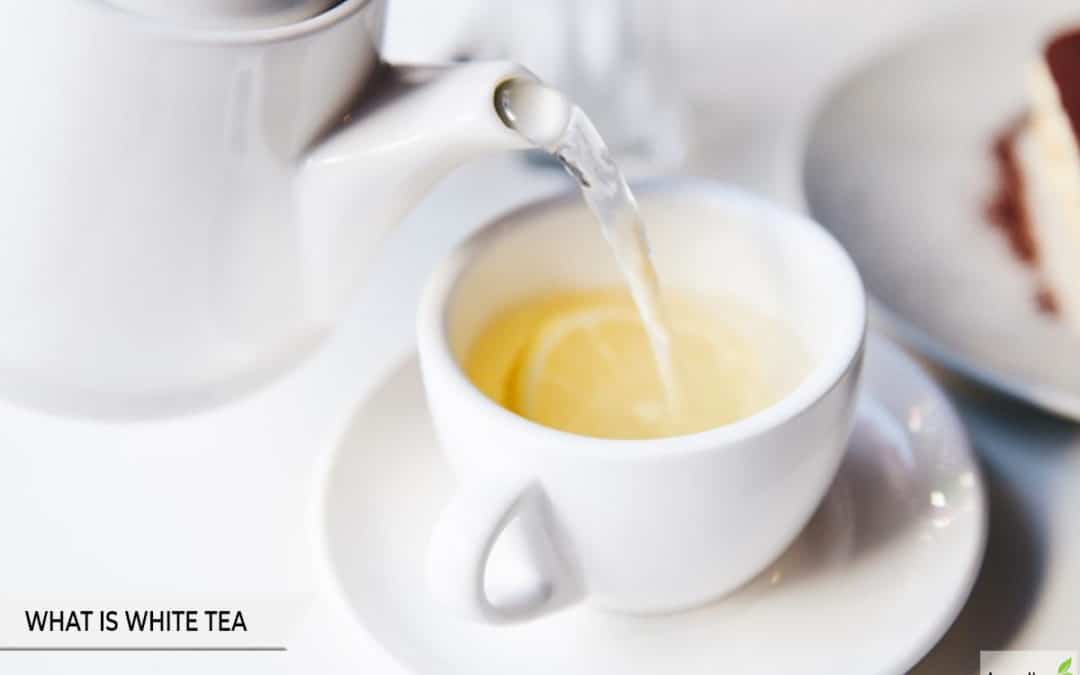
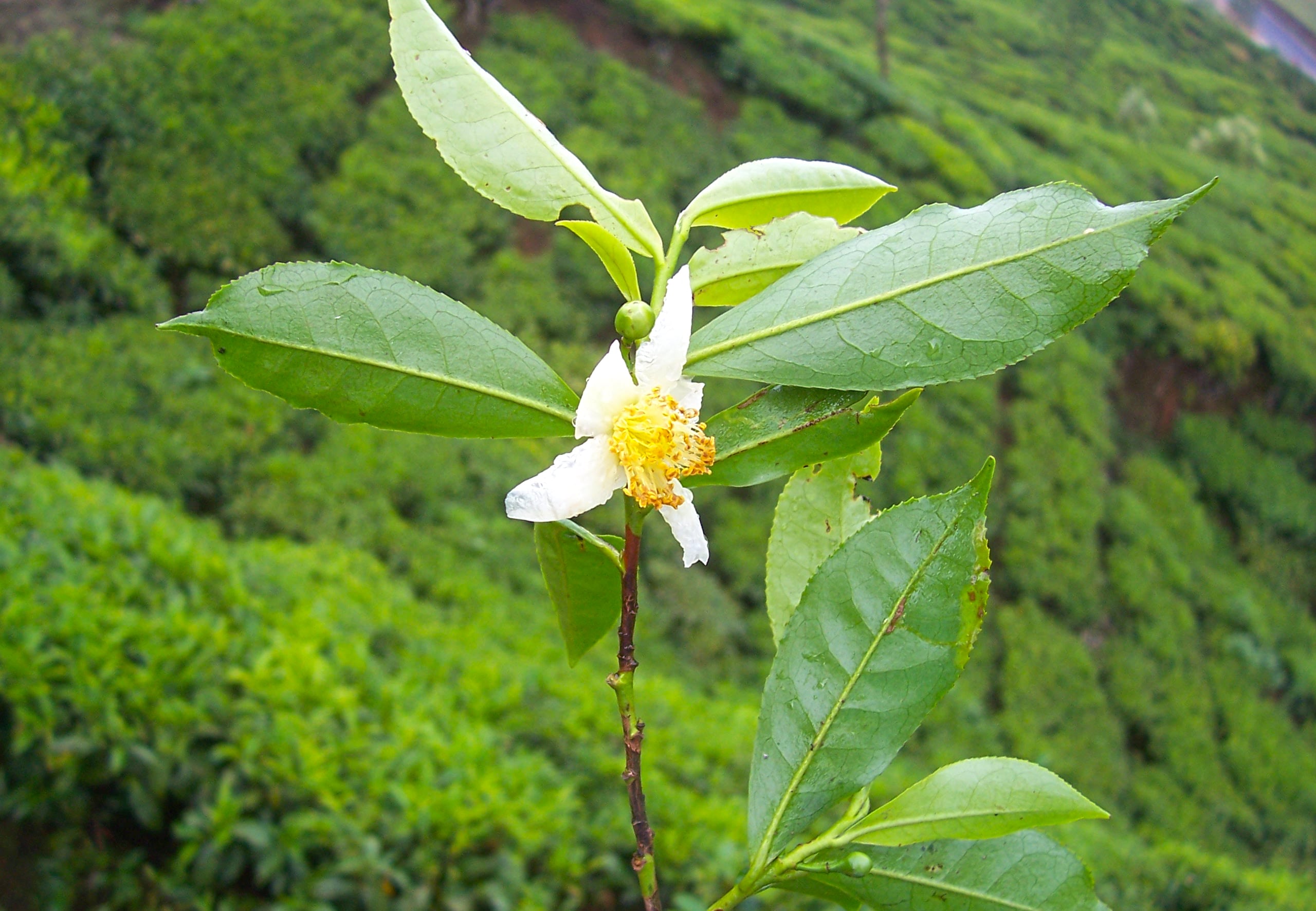

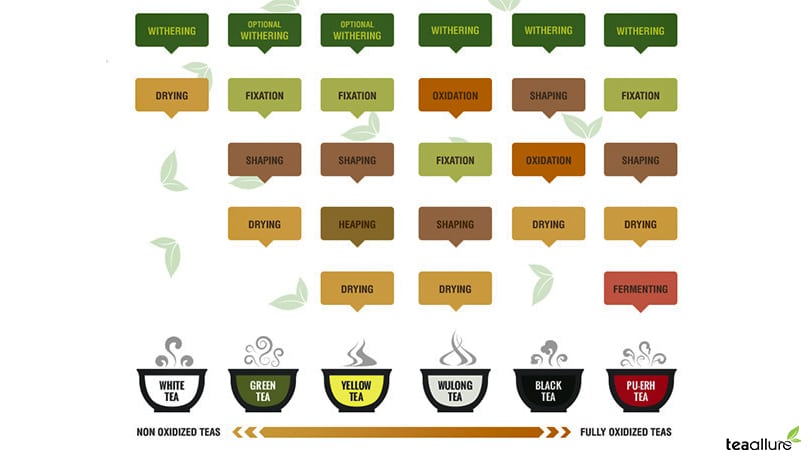
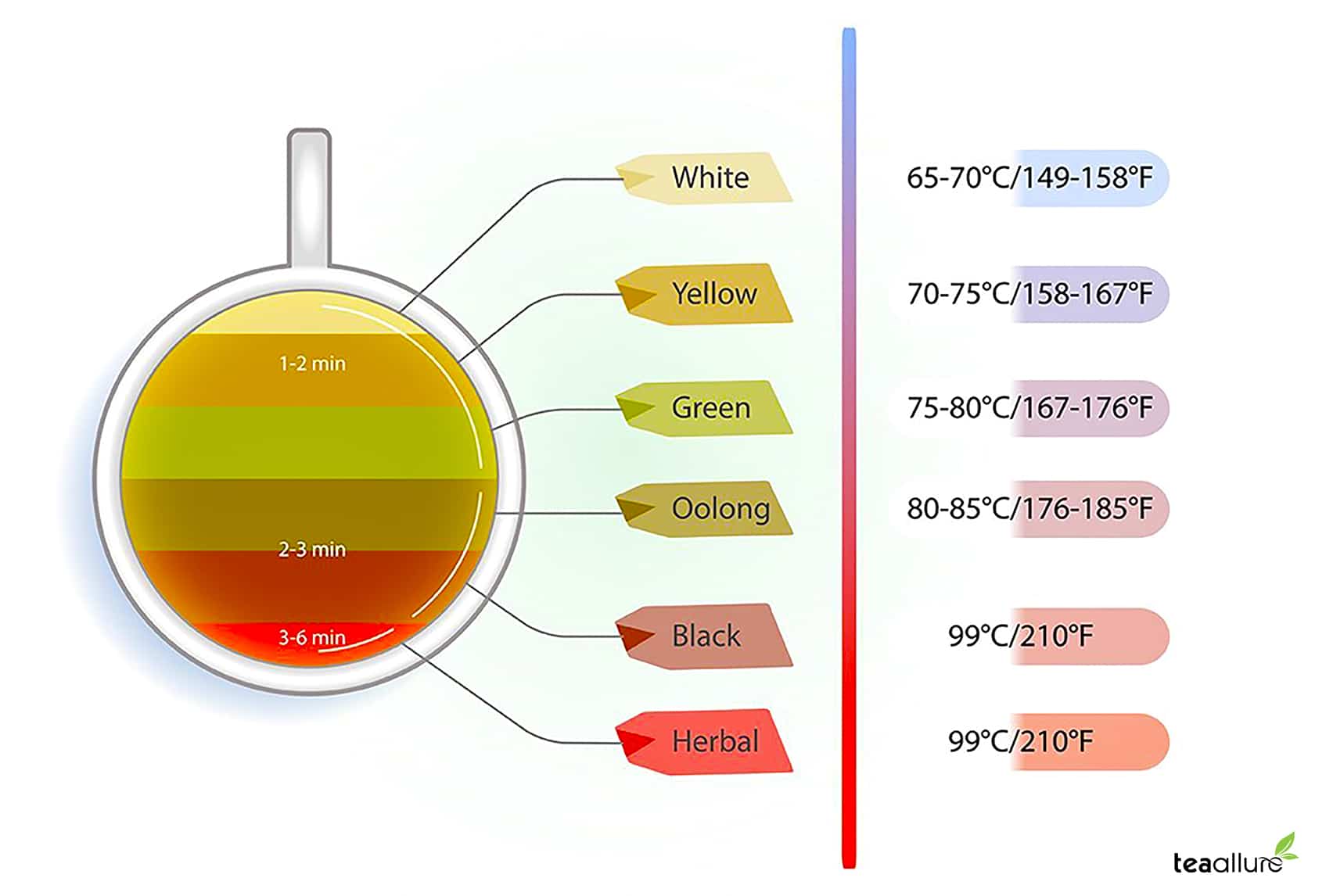
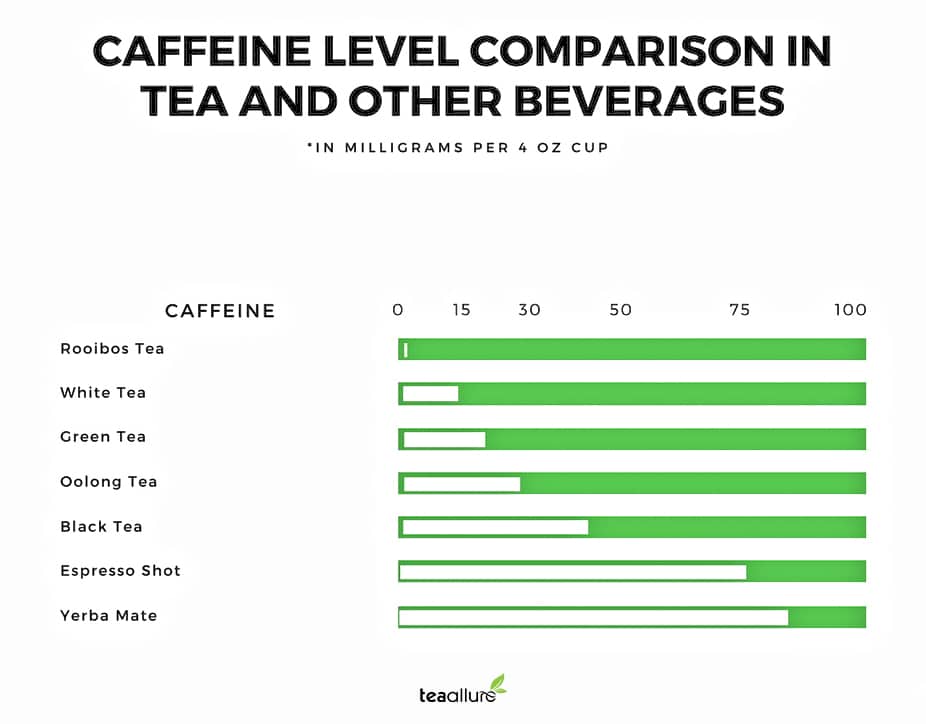
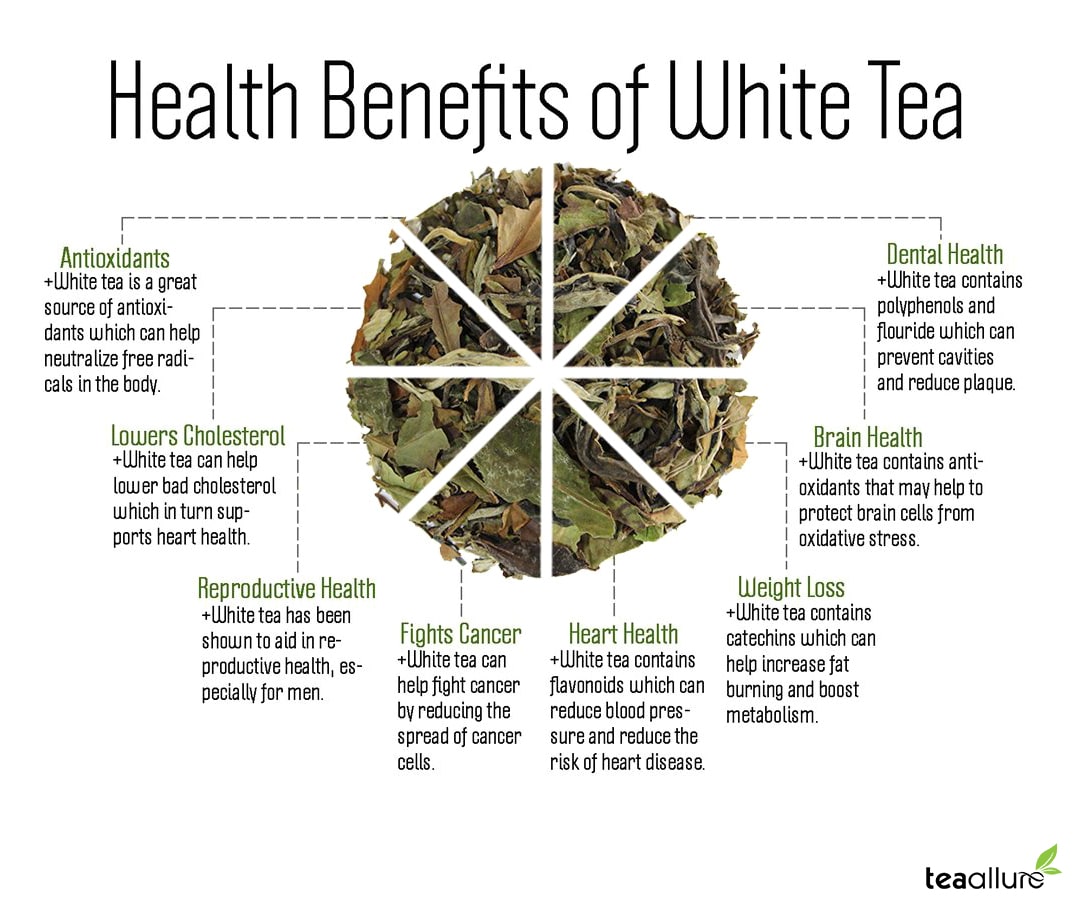
 Hi, my name is Abigail Bradley, founder of TeaAllure. Tea is my passion, and this blog is dedicated to provide all the information for this marvelous gift of nature.
Hi, my name is Abigail Bradley, founder of TeaAllure. Tea is my passion, and this blog is dedicated to provide all the information for this marvelous gift of nature.